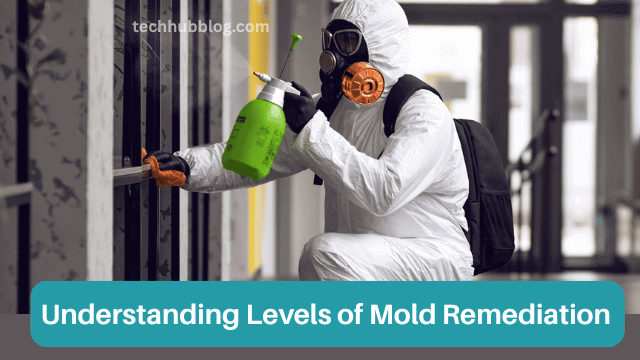Mold Remediation: A Complete Guide to Removal & Understanding Its Levels

Mold Remediation: A Comprehensive Guide to Understanding Levels of Mold Remediation
Mold growth is a common problem in homes and commercial buildings, often resulting from excessive moisture and poor ventilation. If left untreated, mold can cause significant structural damage and pose serious health risks, including respiratory issues, allergies, and other medical complications. Mold remediation is the process of identifying, containing, and removing mold to restore a safe indoor environment. This guide explores the different levels of mold remediation and the appropriate steps for effective mold removal.
What is Mold Remediation?
Mold remediation involves a systematic approach to eliminating mold contamination in an affected space. The process includes assessment, containment, removal, and prevention measures to ensure that mold does not return. Depending on the severity of the infestation, mold remediation is categorized into five levels, ranging from minimal contamination to extensive mold damage.
Levels of Mold Remediation
Level 1: Small-Scale Mold Contamination (Less than 10 square feet)
- Typically found in isolated areas, such as bathroom tiles or HVAC ducts.
- Suitable for DIY cleaning with appropriate safety measures.
- Cleaning Method: Scrub surfaces with detergent and water, followed by a disinfectant.
- Protective Gear: Gloves, an N95 mask, and eye protection.
- Prevention: Improve ventilation, fix leaks, and reduce indoor humidity levels.
Level 2: Moderate Mold Contamination (10-30 square feet)
- Found in larger sections of walls, ceilings, or HVAC systems.
- Requires containment measures to prevent mold spores from spreading.
- Cleaning Method: HEPA vacuuming, scrubbing with antimicrobial solutions, and removing affected materials.
- Protective Gear: Full-face respirator, gloves, and protective clothing.
- Prevention: Repair leaks, install dehumidifiers, and improve air circulation.
Level 3: Significant Mold Contamination (30-100 square feet)
- Usually affects multiple areas in a home or building.
- Professional intervention is recommended to contain and remediate the issue.
- Cleaning Method: HEPA filtration, chemical treatments, and potential removal of contaminated materials.
- Protective Gear: Full PPE, including a respirator, gloves, goggles, and disposable clothing.
- Prevention: Regular inspections, moisture control, and improved drainage systems.
Level 4: Extensive Mold Contamination (Over 100 square feet)
- Severe mold infestation that requires professional remediation services.
- Can pose major health risks if not handled properly.
- Cleaning Method: Sealed containment, industrial-grade HEPA filtration, removal of severely contaminated structures, and air quality testing.
- Protective Gear: Full containment suits with air-purifying respirators.
- Prevention: Implement long-term moisture control measures, regular HVAC maintenance, and mold-resistant building materials.
Level 5: HVAC and Air Duct Contamination
- Mold growth inside air ducts can spread spores throughout the entire property.
- Requires professional HVAC system cleaning and decontamination.
- Cleaning Method: HEPA vacuuming, chemical biocides, and replacement of severely contaminated ducts.
- Protective Gear: Full PPE for workers handling the system.
- Prevention: Routine HVAC maintenance, filter replacements, and proper ventilation management.
Steps for Effective Mold Remediation
- Assessment & Inspection – Identify the source and severity of mold contamination.
- Containment – Seal off affected areas to prevent mold spores from spreading.
- Air Filtration – Use HEPA filters and air scrubbers to remove airborne mold spores.
- Mold Removal – Scrub, vacuum, or remove contaminated materials.
- Cleaning & Disinfection – Apply antimicrobial solutions to eliminate residual mold.
- Restoration & Prevention – Repair damaged structures and implement moisture control measures.
Conclusion
Mold remediation is crucial for maintaining a safe and healthy indoor environment. Understanding the levels of mold contamination allows homeowners and business owners to take the appropriate measures for mold removal and prevention. Whether dealing with a small patch of mold or a large-scale infestation, addressing moisture issues and following proper remediation protocols will help prevent future mold growth. If the contamination is extensive, seeking professional remediation services is highly recommended to ensure complete mold eradication and long-term safety.

